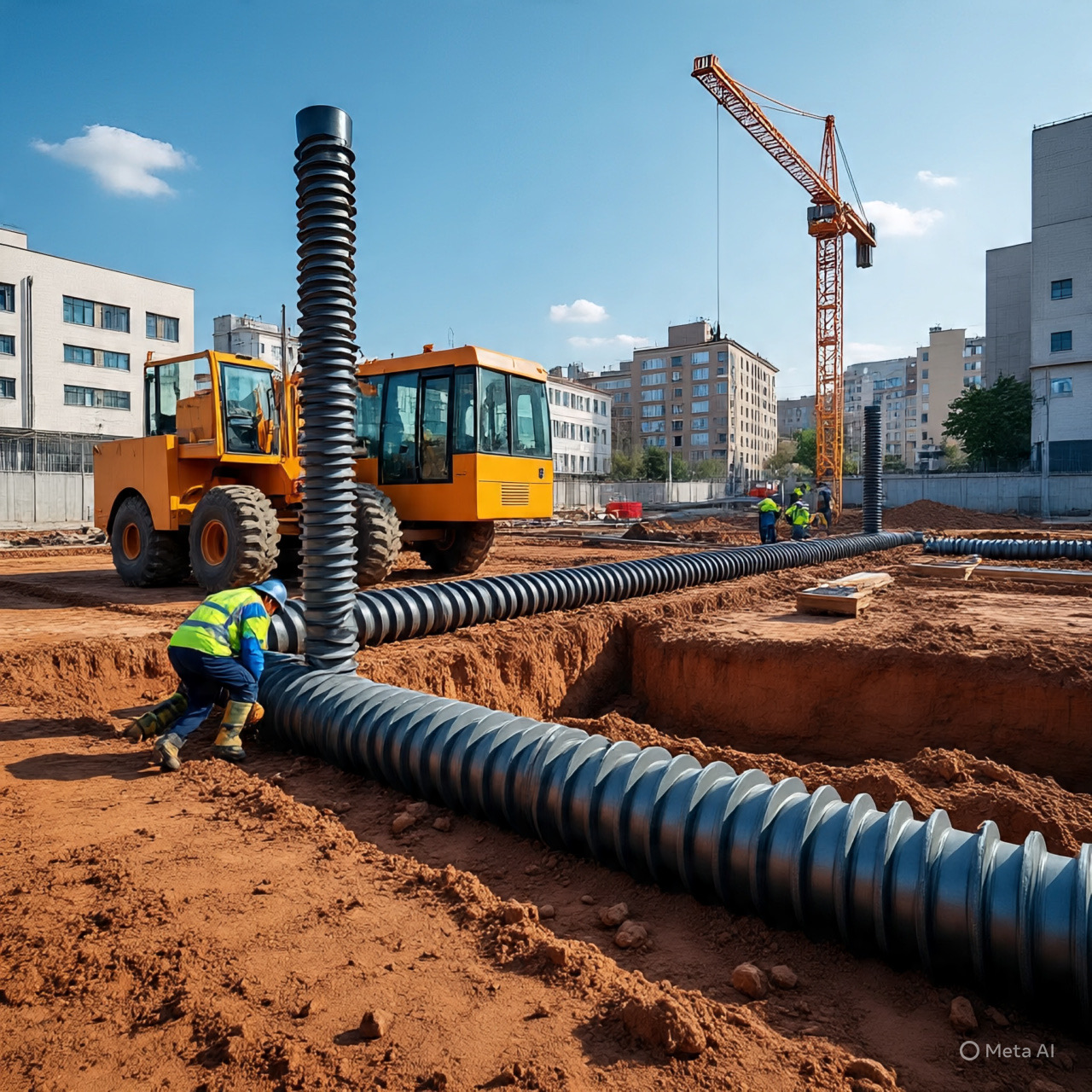The foundation of any structure is more than just the first step in construction—it’s the point where long-term performance, safety, and cost efficiency intersect. For decades, concrete has dominated foundation design, but as sustainability, speed, and soil challenges evolve, the industry is rethinking old norms. Enter helical piles, a modern solution reshaping how builders approach everything from residential decks to large-scale commercial projects.
In recent years, helical piles for foundations have become the go-to choice for engineers and contractors seeking reliability without the complications of traditional deep foundations. But what makes them so different—and why are they transforming the way we build? Let’s break it down.
The Evolution of Foundation Systems
For most of modern history, foundation systems relied heavily on excavation, formwork, and concrete curing. While effective, these processes came with long timelines, environmental disruption, and limited adaptability to poor soil conditions.
Helical piles—essentially steel shafts with helical plates welded along their length—introduced a more refined approach. Installed using hydraulic torque rather than hammering or drilling, they can support heavy loads immediately after installation. No waiting for concrete to set, no soil displacement, and no vibration that might compromise nearby structures.
This blend of speed, precision, and strength has positioned helical piles as a cornerstone of modern geotechnical engineering.
How Helical Piles Work
The basic principle behind helical piles is simple yet brilliant: transfer structural loads deep into stable soil layers through torque-driven steel anchors. The helices (spiral-shaped plates) act like threads on a screw, allowing the pile to twist smoothly into the ground while providing both tension and compression resistance.
Once installed to the required torque, engineers can directly calculate load-bearing capacity. This immediate verification eliminates guesswork and ensures the foundation meets design specifications with precision.
For projects in unpredictable conditions—think soft clay, peat, or frost-susceptible soils—this control is invaluable.
Installation That’s Fast and Predictable
One of the most significant advantages of helical piles is installation efficiency. There’s no need for large excavation crews, heavy concrete trucks, or curing time. A small hydraulic drive head mounted on a mini-excavator can install multiple piles in a single day, even in tight or remote job sites.
Weather delays are also drastically reduced since installation doesn’t depend on temperature-sensitive materials like concrete. That means year-round construction becomes a reality, particularly beneficial in regions with harsh winters.
For homeowners, developers, and municipal projects alike, predictable timelines mean predictable budgets.
Sustainability in Foundation Design
The construction industry faces growing pressure to reduce environmental impact—and helical piles deliver on that front. Their installation produces minimal noise, vibration, and spoil (excavated material), reducing the carbon footprint of a build.
Moreover, because the steel piles are removable and reusable, they align with circular construction principles. Temporary structures such as event spaces or solar panel arrays can be installed and later dismantled without leaving behind waste or soil contamination.
According to the Canadian Construction Association, reusability and low disruption are among the key attributes of sustainable foundation practices—a space where helical systems clearly lead.
Strength and Versatility Across Applications
Helical piles aren’t just for niche projects. They’ve proven effective across a wide range of applications:
This versatility makes them equally valuable for new builds and restoration work—two areas rarely served well by one system.
Precision Through Engineering
Modern helical pile systems rely on torque monitoring during installation to determine load capacity. This isn’t guesswork; it’s physics. Each turn of the drive head provides real-time data on soil resistance, allowing engineers to confirm bearing capacity on-site.
This precision eliminates overdesigning and unnecessary materials—an issue that often plagues traditional concrete footings. The result? Less waste, more confidence, and tighter quality control from start to finish.
The Canadian Geotechnical Journal and similar studies have emphasized how torque correlation methods offer both reliability and repeatability, making them standard practice in advanced foundation design.
Addressing Poor Soil and Site Constraints
In Canada, where expansive clays, frost lines, and variable soil conditions are common, traditional foundations often struggle to perform consistently. Helical piles bypass this problem by anchoring into stable strata below frost depth, resisting heave, settlement, and lateral movement.
They’re also a lifeline for urban or confined sites where excavation isn’t feasible. Since installation creates minimal disturbance, nearby structures remain unaffected, and the project moves ahead without extensive shoring or soil removal.
Long-Term Reliability and Maintenance
Helical piles are hot-dipped galvanized or coated to resist corrosion, ensuring decades of service life even in moisture-heavy or saline environments. With proper design and installation, their performance equals or exceeds that of cast-in-place concrete.
And since each pile can be tested individually during installation, maintenance or inspection later on becomes far simpler. This data-driven transparency appeals to engineers and clients alike who want to understand exactly how their structure stands the test of time.
The Cost and Value Equation
While upfront costs can vary depending on design and soil type, helical piles often reduce total project expenses. There’s less equipment, fewer labour hours, and zero waiting time for curing. The efficiency gained in scheduling alone can offset the cost of materials.
Add to that the ability to reuse or adjust the piles for future modifications, and the long-term ROI becomes even more compelling. For developers balancing tight margins, this flexibility is hard to ignore.
For a deeper understanding of cost-saving foundation techniques, the Infrastructure Health and Safety Association (IHSA) offers resources comparing foundation technologies and their performance under Canadian conditions.
Building the Future from the Ground Up
The shift toward helical pile foundations isn’t just a technical upgrade—it’s a mindset change. Builders, architects, and homeowners are rethinking what “foundation” means in a world that demands adaptability, speed, and environmental responsibility.
As more projects adopt these systems, one thing becomes clear: the future of foundation design isn’t poured—it’s screwed in.
